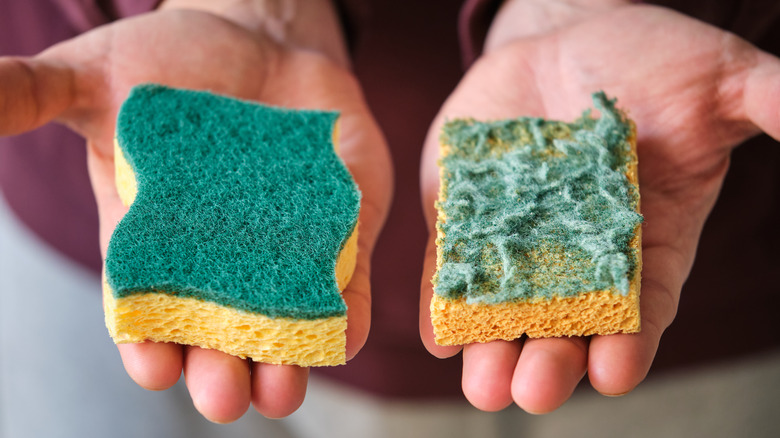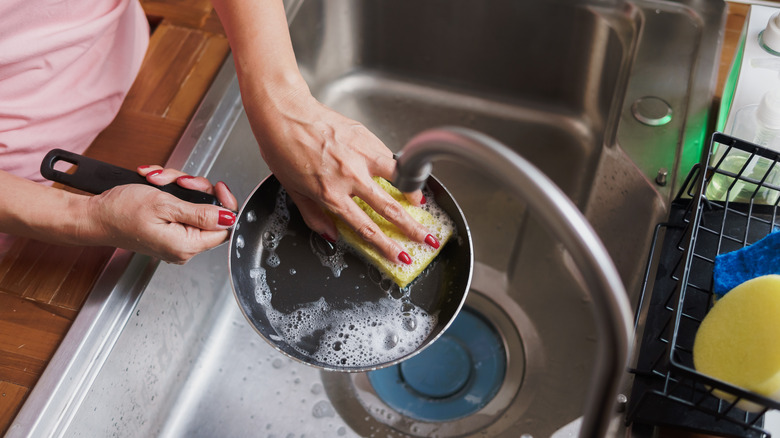How Long Do Kitchen Sponges Actually Last? (And When To Throw Yours Out)
Sponges are used to wipe counters, scrub dishes, and maybe even clean residue from the kitchen faucet head — there's no doubt they are essential for keeping your kitchen clean. But how long has yours actually been sitting by your sink? The answer, unfortunately, is probably too long.
Sponges are prime real estate for hundreds of types of bacteria, thanks to their porous texture, moisture retention, and exposure to food particles. In fact, kitchen sponges are some of the germiest items in the entire kitchen. Left unsanitized, they can become a safety hazard — not to mention start to smell downright foul.
If you're not sanitizing your sponge, it should probably be thrown out after one to two weeks. With regular sanitizing, however, you can stretch its usefulness to a month or month and a half. The secrets to keeping your sponge cleaner for longer include soaking it in a 9:1 mixture of water and bleach, microwaving it in water until steaming, or boiling it on the stove for five minutes after each use. These methods kill nearly all bacteria and help you avoid wiping down clean plates with a dirty scrubber.
Still, even with regular cleaning, sponges aren't built to last. If you're unsure whether or not to throw yours away, a good rule of thumb is to toss it when it's falling apart, has a noticeable odor, or looks stained with food particles.
How to correctly use and store your sponge
Regular cleaning and replacement are crucial for keeping your sponge sanitary — but how you use and store it can make just as much of a difference. Sponges should never be used to clean up raw meat juices or messes from the floor. Doing so can transfer dirt and bacteria back onto your kitchen surfaces. For those tasks, opt for single-use paper towels or disinfectant wipes, and reserve the sponge for washing dishes. Likewise, it's smart to avoid using the same sponge for multiple tasks (wiping counters, scrubbing dishes, cleaning a glass-top stove, etc.), which can lead to cross-contamination.
When it comes to storage, leaving your sponge in the bottom of the sink or on a flat surface traps moisture, which encourages microbial growth. The best way to store it is upright or on a slotted holder that promotes airflow, allowing it to dry out fully between uses. Some people keep their sponge on a rack in the window for maximum sunlight exposure, while others use magnetic holders or caddies that stick inside the sink wall to keep the sponge elevated and out of standing water.


